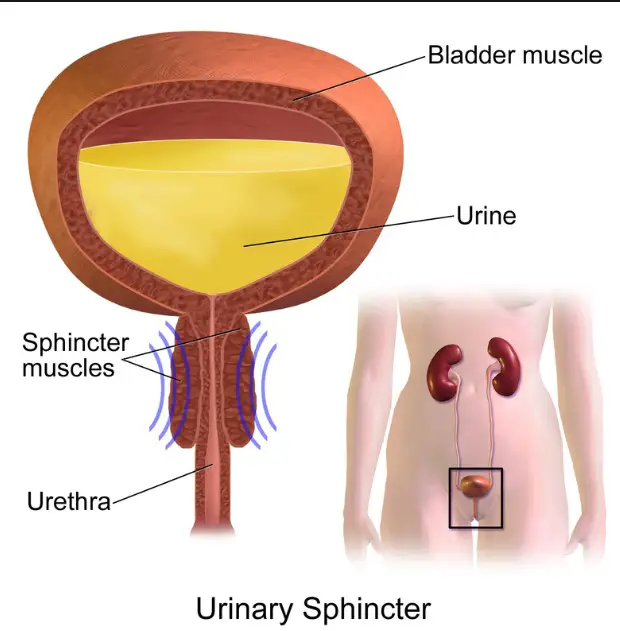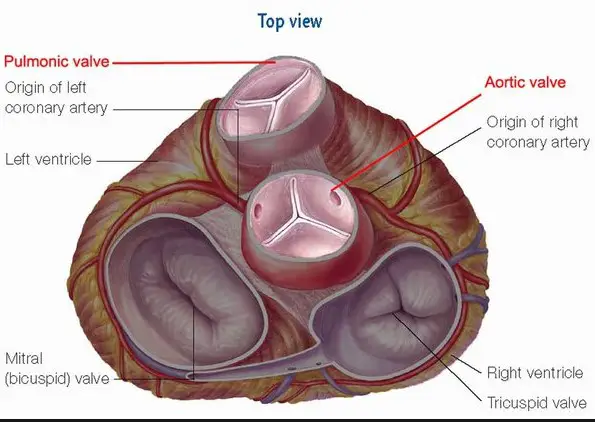Valves and sphincters are critical anatomical structures that serve distinct but crucial roles in regulating the flow of fluids and solids within the human body. Despite their shared goal of flow regulation, these components operate through differing mechanisms and are located in various systems, highlighting the complexity and precision of bodily functions.
The primary difference between a valve and a sphincter lies in their structure and function. Valves, typically found in the heart and veins, are gatekeepers that ensure unidirectional flow of blood. Sphincters, on the other hand, are circular muscles located at various points in the digestive and urinary systems, controlling the passage of solids and liquids by contracting and relaxing.
Valves and sphincters are indispensable to maintaining homeostasis, each playing specialized roles in different body systems. Their efficient operation is key to the circulatory, digestive, and excretory systems, influencing overall health and well-being. By understanding their differences and contributions, we gain insights into their significance in medical science and human physiology.

Basics of Valves
Definition and Role
In the human body, valves are gate-like structures that play a critical role in regulating the flow of fluids, such as blood and lymph. They ensure that these fluids move in a single direction, preventing any backward flow that could disrupt the body’s delicate balance.
Types of Valves in the Body
The human body contains several types of valves, each serving a unique function:
- Heart Valves: Including the mitral, tricuspid, aortic, and pulmonary valves, these regulate blood flow through the heart’s chambers and into the arteries.
- Venous Valves: Found in the veins of the legs, these prevent the backflow of blood and assist in its return to the heart, especially against gravity.
- Lymphatic Valves: Present in the lymph vessels, they facilitate the unidirectional flow of lymph fluid, crucial for immune function.
Key Features
Valves share some common features, such as:
- Unidirectional Flow: They allow fluid to move in only one direction.
- Response to Pressure Changes: Opening and closing based on differential pressure.
- Structural Durability: Designed to withstand millions of cycles without failing.
Basics of Sphincters
Definition and Purpose
Sphincters are circular muscle bands that regulate the passage of substances between different sections of the body. Their primary purpose is to control the release of fluids, solids, and gases, maintaining the timing and direction of flow.
Types of Sphincters and Their Locations
Sphincters are widespread throughout the body, with key types including:
- Esophageal Sphincter: Controls the passage of food from the esophagus into the stomach.
- Pyloric Sphincter: Regulates the movement of stomach contents into the small intestine.
- Anal Sphincter: Manages the expulsion of feces from the body.
- Urethral Sphincter: Controls the release of urine from the bladder.
Key Characteristics
Key characteristics of sphincters include:
- Muscle Composition: Primarily made of smooth or striated muscle fibers.
- Automatic and Voluntary Control: Some sphincters are under conscious control, while others operate involuntarily.
- Location-Specific Function: Each sphincter is adapted to the needs of its specific location and function.
Functional Differences
Operational Mechanics
- Valves operate based on pressure differentials, opening to allow flow in the desired direction and closing to prevent backflow.
- Sphincters, in contrast, rely on the contraction and relaxation of muscle fibers to open and close the passage they control.
Control and Regulation
- Valves are primarily regulated by the mechanical forces within the fluid they control, such as the blood pressure in the heart’s chambers.
- Sphincters may be controlled autonomously by the nervous system or through voluntary action, depending on their location and function.
Response to Stimuli
- The operation of valves is largely automatic and influenced by the physical conditions of their environment.
- Sphincters respond to both chemical and neural stimuli, adjusting their operation based on the body’s needs.
Structural Differences
Anatomical Composition
- Valves are typically composed of connective tissue with varying degrees of elasticity, allowing them to open and close efficiently.
- Sphincters are made of muscle tissue, either smooth or striated, enabling them to contract and relax.
Location-Specific Variations
- The design of valves is directly influenced by their location. For example, heart valves are structured to handle high-pressure blood flow, whereas venous valves deal with lower pressure.
- Sphincters are adapted to the passage they control. For instance, the anal sphincter has features allowing it to manage solid waste expulsion, while the urethral sphincter is suited for liquid management.

Role in Body Systems
Valves
Circulatory System
Valves play a pivotal role in the circulatory system by ensuring that blood flows in a single direction, whether through the heart or within the veins. The heart contains four main valves: the mitral, tricuspid, aortic, and pulmonary valves. These valves prevent the backflow of blood, thereby maintaining a steady and efficient circulation throughout the body. Their ability to open and close at precise times supports the heart’s function as a pump, propelling blood to various parts of the body with the necessary pressure.
Lymphatic System
In the lymphatic system, valves facilitate the movement of lymph fluid, which carries white blood cells and debris from tissues back to the bloodstream. Lymphatic valves prevent the backward flow of this fluid, ensuring its one-way journey towards the heart. This movement is crucial for the body’s immune response and for maintaining fluid balance.
Sphincters
Digestive System
The digestive system relies on various sphincters to manage the movement of food, liquids, and waste. For instance, the lower esophageal sphincter prevents stomach acid from entering the esophagus, while the pyloric sphincter regulates the passage of digested food from the stomach to the small intestine. Further down, the anal sphincter controls the expulsion of fecal matter. These sphincters ensure that the digestive process is orderly and timed correctly, preventing issues like acid reflux and incontinence.
Urinary System
In the urinary system, the urethral sphincter manages urine flow from the bladder to the urethra. Its control is crucial for urinary continence, allowing individuals to voluntarily retain and release urine. Dysfunction in this sphincter can lead to incontinence, significantly impacting quality of life.
Clinical Significance
Valve Disorders
Common Conditions
Valve disorders can significantly affect the circulatory system’s efficiency. Conditions such as valvular stenosis (narrowing of the valve) and valvular regurgitation (leakage of the valve) can lead to heart failure, arrhythmias, and other cardiovascular issues. These disorders may arise from congenital defects, aging, or diseases such as rheumatic fever.
Treatment Options
Treatment for valve disorders varies based on the severity and the specific valve involved. Options include:
- Medication to manage symptoms and prevent further damage.
- Surgical repair or replacement of the affected valve using mechanical or biological materials.
- Minimally invasive procedures, such as balloon valvuloplasty, to widen a narrow valve.
Sphincter Disorders
Common Conditions
Sphincter disorders can disrupt the normal flow of bodily substances, leading to conditions like GERD (gastroesophageal reflux disease), resulting from the weakening of the lower esophageal sphincter, or urinary incontinence, due to dysfunction of the urethral sphincter.
Treatment Methods
Treatment focuses on strengthening the sphincter or managing its control:
- Lifestyle changes and medications to improve sphincter function.
- Surgical interventions, such as sphincter repair or the installation of artificial sphincters, especially in severe cases.
- Physical therapy to strengthen the muscles around the sphincter.
Technological and Medical Advances
Innovations in Treatment
Recent advancements have significantly improved the treatment of both valve and sphincter disorders. For valve conditions, techniques like transcatheter aortic valve replacement (TAVR) offer less invasive alternatives to traditional surgery, with quicker recovery times. Sphincter issues have seen innovations such as injectable bulking agents that enhance the sphincter’s closing ability and neuromodulation devices that improve control over sphincter muscles.
Future Prospects
The future of treating these disorders looks promising, with ongoing research into regenerative medicine aiming to repair or regenerate damaged valves and sphincters. Bioprinting and stem cell therapy offer potential avenues for creating functional tissue replacements, heralding a new era in personalized and effective treatment options.
Frequently Asked Questions
What causes valve disorders?
Valve disorders can result from congenital defects, infections, age-related changes, or damage due to heart conditions like rheumatic fever. These factors can lead to valve stenosis (narrowing) or regurgitation (leakage), impacting blood flow efficiency and overall heart function.
How do sphincters maintain bodily functions?
Sphincters maintain bodily functions by tightly controlling the passage of substances between different sections of the body. They prevent backflow and ensure that materials like food, bile, and urine move in the correct direction and at the right time, which is crucial for digestive and excretory processes.
Can valve and sphincter disorders be treated?
Yes, both valve and sphincter disorders can be treated through a combination of medication, lifestyle changes, and in more severe cases, surgery. Treatment aims to manage symptoms, improve function, and prevent complications. Advances in medical technology have significantly improved the success rates of such treatments.
What role do valves play in the lymphatic system?
In the lymphatic system, valves prevent the backflow of lymph, a fluid that contains white blood cells and waste products. These valves ensure the unidirectional flow of lymph towards the heart, facilitating the removal of toxins and the functioning of the immune system.
Conclusion
Valves and sphincters, though different in their anatomical structure and function, are fundamental to the efficient operation of the human body. Their roles in facilitating the controlled movement of fluids and solids across various systems underscore their importance in maintaining health and managing diseases.
The study of these structures not only enlightens us about the intricate workings of our bodies but also opens pathways for advanced medical treatments. Recognizing their significance is pivotal in both preventative care and the treatment of related disorders, showcasing the marvel of human anatomy and the continuous quest for medical innovation.

